The 2030 Work Shift – Part 1: The Rise
The best jobs of the next decade — and why the future belongs to those who adapt faster than AI.
The future of work isn’t coming. It’s already here.
AI is learning faster than interns. Climate change is rewriting industries. Gen Z is skipping college and launching careers on YouTube. Meanwhile, old-school jobs are vanishing like Blockbuster on a Friday night.
But here’s the good news: the job market isn’t dying — it’s evolving. And fast.
This series, The 2030 Work Shift, is your inside map to the biggest career transformation of our lifetime. In Part 1, we’re spotlighting the jobs that are booming — from white-collar power roles to blue-collar tech-infused trades. These aren’t just “safe” jobs. They’re the roles shaping the future.
Let’s dive in.
Why Work Is Shifting
Let’s not sugarcoat it: the world of work is being ripped apart and rebuilt in real time. Three mega-trends are driving the transformation:
1. Technology is automating everything... except originality.
AI is replacing routine tasks faster than most degrees can keep up. But it’s also creating jobs — ones that blend human creativity, problem-solving, and tech fluency.
2. Climate change isn’t just a crisis — it’s a career engine.
The green economy is exploding. From renewable energy to sustainable agriculture, climate action is birthing new industries that need skilled people yesterday.
3. Demographics are tilting the scales.
Aging populations mean a global care crisis. Meanwhile, emerging markets with young, hungry workforces are driving demand for education, digital tools, and infrastructure.
These shifts aren’t on the horizon — they’re already impacting hiring, salaries, and the very definition of a “job.”
Next up: the winners.
🔵 Best White-Collar Jobs for 2030
Brains. Strategy. Tech-savvy. These are the roles too complex, creative, or human-centered for AI to fully replace.
Let’s break down the rising stars of the knowledge economy:
1. AI / Machine Learning Specialist
Building the very systems that are transforming the world. These people aren’t scared of AI — they train it.
Why it’s rising: Every sector is integrating AI. Demand is outpacing talent.
Median salary: ~$137,000/year
Automation risk: Low — AI can’t replace the people who build it.
2. Data Analyst / Scientist
Data is the new oil — and these folks are the refineries. They translate raw numbers into strategic gold.
Why it’s rising: Every decision is becoming data-driven.
Median salary: ~$108,000/year
Automation risk: Low — pattern recognition + human judgment = power combo.
3. Cybersecurity Analyst
While AI evolves, so do hackers. Security is now a boardroom priority, not just an IT task.
Why it’s rising: Cybercrime costs are expected to hit $10.5 trillion by 2025.
Median salary: ~$112,000/year
Automation risk: Low — threats change too fast for autopilot defense.
4. Software Developer / Engineer
Still the heartbeat of the digital world. From mobile apps to machine learning pipelines.
Why it’s rising: Every company is now a tech company.
Median salary: ~$130,000/year
Automation risk: Low — creative problem-solving is still human turf.
5. Digital Marketing Strategist
They don’t sell products — they sell stories. And they make algorithms fall in love with them.
Why it’s rising: E-commerce and attention economy are booming.
Median salary: ~$90,000/year
Automation risk: Medium-Low — AI can assist, but strategy needs a brain.
6. Sustainability Analyst / ESG Consultant
Helping companies turn climate goals into action (and avoid getting roasted on social media).
Why it’s rising: Greenwashing is out. Real accountability is in.
Median salary: ~$85,000/year
Automation risk: Low — complex, policy-tied decisions.
7. UX/UI Designer (AI-literate)
They make tech feel human. Interfaces, experiences, and flows — all designed for real people.
Why it’s rising: More apps, more interfaces, more expectations.
Median salary: ~$95,000/year
Automation risk: Medium — AI can assist, but the empathy piece is human.
8. Project Manager (Tech/Ops)
The adult in the digital room. Keeping chaos in check across fast-moving teams and tools.
Why it’s rising: Complexity is rising. So is the need for structure.
Median salary: ~$100,000/year
Automation risk: Low — managing people and ambiguity = not AI’s strong suit.
9. Health Informatics Specialist
They bridge healthcare and tech — improving patient care with data and systems.
Why it’s rising: Healthcare digitization is non-negotiable.
Median salary: ~$98,000/year
Automation risk: Low — combines medical knowledge with tech integration.
10. Learning Experience Designer
Designing training, online courses, and reskilling programs in a world that never stops changing.
Why it’s rising: Lifelong learning is the new normal.
Median salary: ~$82,000/year
Automation risk: Low — education still thrives on human connection.
🔴 Best Blue-Collar Jobs for 2030
The trades are back — but smarter, cleaner, and in higher demand than ever.
Forget the stereotypes. Blue-collar work in 2030 isn’t about grease and grunt — it’s about tech-savvy, hands-on problem-solvers who can build, fix, and power the future.
These jobs aren’t just surviving... they’re booming.
1. Renewable Energy Technician
Solar panels. Wind farms. Grid batteries. Clean energy needs boots on the ground.
Why it’s rising: The world is decarbonizing, fast.
Median salary: ~$70,000/year
Automation risk: Low — complex, site-specific tasks
2. Construction Worker / Smart Builder
Skilled builders are needed for housing, climate retrofits, and infrastructure everywhere.
Why it’s rising: Aging infrastructure + rapid urbanization = jobs
Median salary: ~$58,000/year
Automation risk: Medium — still requires on-site adaptability
3. Electrician (Green Systems)
Electricians are key to EV charging stations, solar installations, and smart homes.
Why it’s rising: The grid is evolving — and so is demand
Median salary: ~$65,000/year
Automation risk: Low — troubleshooting and planning = human advantage
4. Logistics & Delivery Driver
Especially for “last-mile” delivery in cities, where automation still struggles.
Why it’s rising: E-commerce shows no signs of slowing
Median salary: ~$45,000/year
Automation risk: Medium — but full automation is years off
5. Smart Farming Operator
Drones, sensors, and AI are coming to farms — and they need people to run them.
Why it’s rising: Food demand + tech = agri-innovation
Median salary: ~$52,000/year
Automation risk: Medium — but hybrid tech/human skills win
6. Home Health Aide
As populations age, care work is becoming one of the most essential roles on the planet.
Why it’s rising: 300 million+ people will be 65+ by 2030
Median salary: ~$33,000/year
Automation risk: Low — empathy and touch can’t be coded
7. EV Technician / Mechanic
Electric vehicles need a different kind of wrench-turner.
Why it’s rising: Gas is out. Electric is in.
Median salary: ~$60,000/year
Automation risk: Low-Medium — diagnostics may go digital, but not repairs
8. HVAC Specialist (Green Buildings)
Energy-efficient heating and cooling systems are becoming the standard.
Why it’s rising: Green building codes = new tech, more upgrades
Median salary: ~$62,000/year
Automation risk: Medium — tools can assist, but not replace
9. Waste Management Technician
Recycling, upcycling, and smart disposal are critical to sustainability goals.
Why it’s rising: Urban growth = more waste, stricter rules
Median salary: ~$50,000/year
Automation risk: Medium — sorting tech exists, but oversight needed
10. Drone Operator
Used in agriculture, deliveries, construction inspections, disaster zones — and beyond.
Why it’s rising: Fast, flexible, and cheaper than helicopters
Median salary: ~$68,000/year
Automation risk: Low-Medium — still needs a human eye and flight planning
🧩 What These Jobs Have in Common
They’re not random. The future rewards patterns — and these jobs share the same DNA.
No matter the collar color, these future-proof roles all check the same boxes:
✅ They solve real problems.
Energy, infrastructure, security, care, climate, knowledge. The work is needed, not just “nice to have.”
✅ They blend tech and humanity.
It’s not about fighting AI — it’s about partnering with it. These jobs use digital tools, but don’t get replaced by them.
✅ They’re low on routine.
Repetitive = replaceable. These roles demand adaptability, judgment, and human nuance.
✅ They reward soft skills as much as hard skills.
Communication. Empathy. Creativity. Coordination. These aren’t “fluffy” — they’re what robots still suck at.
✅ They offer growth paths.
Many of these jobs aren’t dead-ends — they’re launchpads. You can start with a certification and level up into leadership, consulting, or entrepreneurship.
Bottom line: The future belongs to hybrid thinkers.
People who can think like a machine, work like a human, and adapt like a startup.
🚀 What You Can Do Now
Don’t wait for the future of work to “arrive.” It’s already knocking. Here’s how to meet it head-on.
This isn’t about predicting the future. It’s about building your relevance in it.
🎯 1. Pick a direction — not a destination.
You don’t need a 10-year plan. You need a starting point.
Choose a space: tech, healthcare, green energy, logistics, education. Follow the signal, not the noise.
💡 2. Get obsessed with learning (and unlearning).
AI is learning daily. You can too.
Certs, bootcamps, YouTube, mentorship — just keep moving.
And yes, unlearning outdated mindsets is just as valuable.
🧰 3. Build a hybrid skillset.
Don’t just code — learn to explain what you built.
Don’t just care — learn how to document, digitize, and optimize it.
Mix disciplines. That’s where the magic happens.
🌍 4. Follow trends, not titles.
Don’t aim to be a “Marketing Manager.”
Aim to be the person who understands how AI will change marketing.
Careers die. Capabilities scale.
🗣️ 5. Document your journey.
Build in public. Share what you’re learning. Create a presence.
The internet is the new resume — and visibility creates opportunity.
No matter where you’re starting, the next step is clear: start adapting now. Because the people who win in 2030 aren’t the ones with the perfect resume — they’re the ones who knew when to pivot.
Up next:
Part 2 — “The Fall.”
We’ll look at the jobs that are quietly disappearing, and why holding on could hold you back.
Subscribe so you don’t miss it.




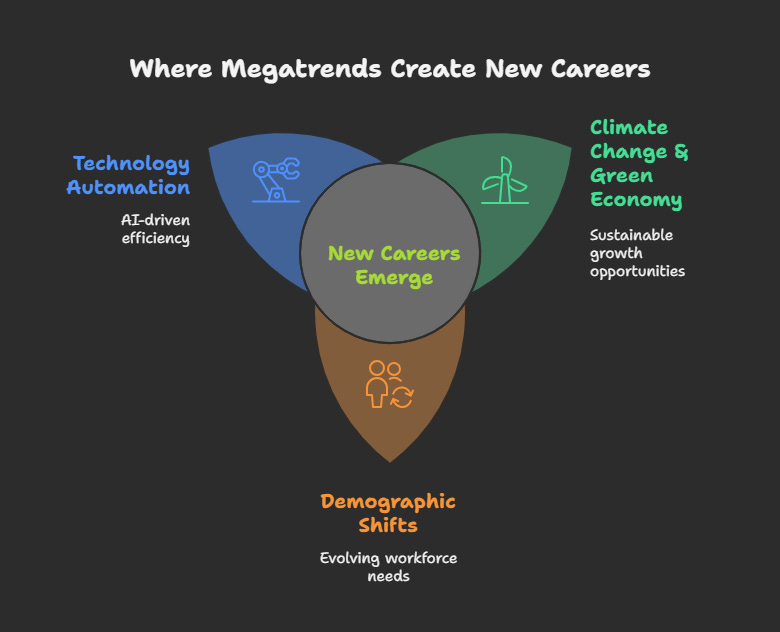
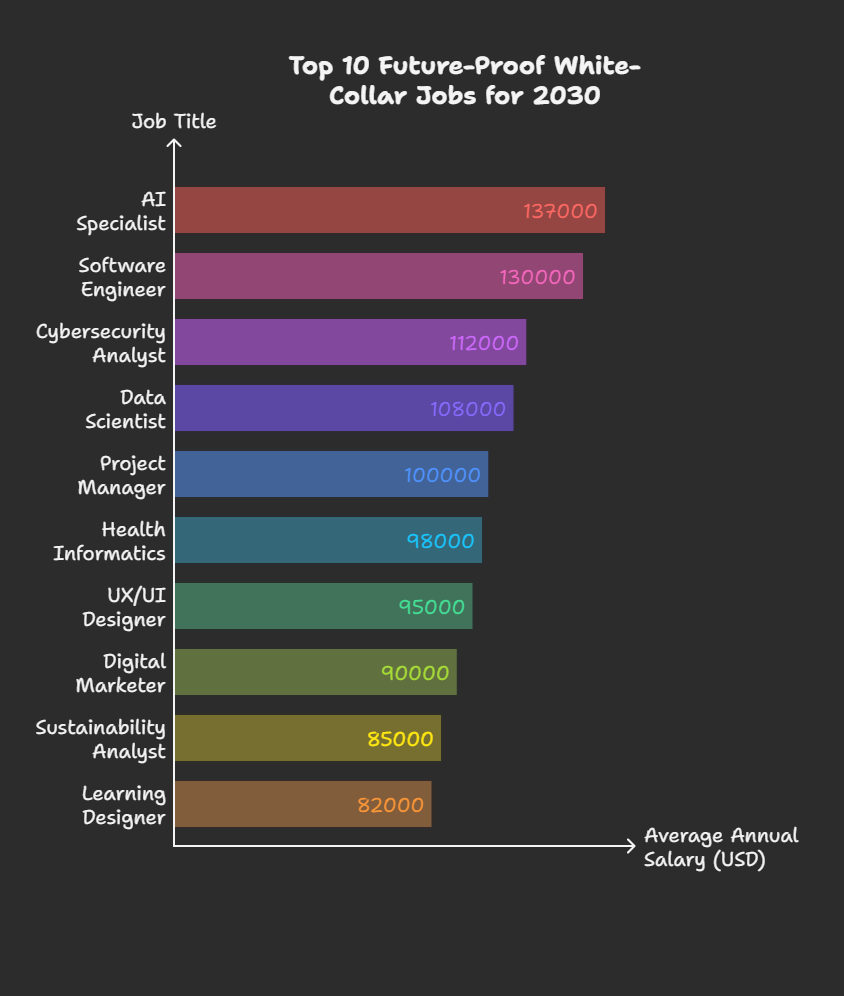
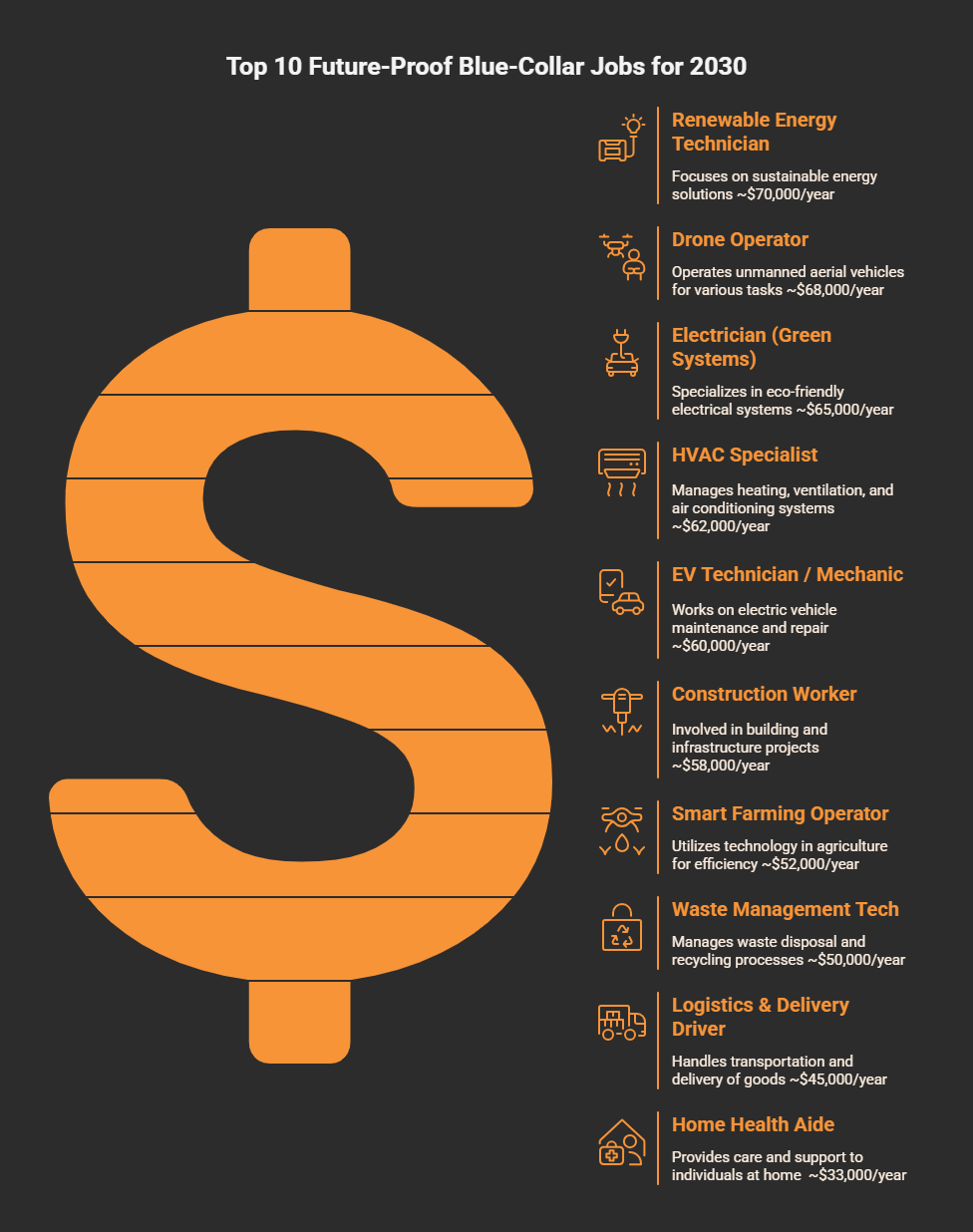
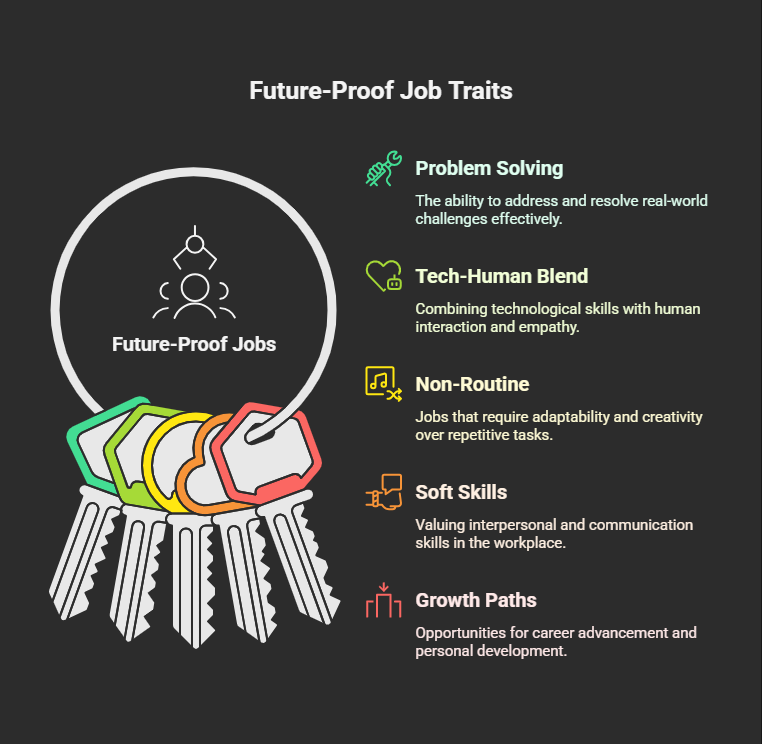
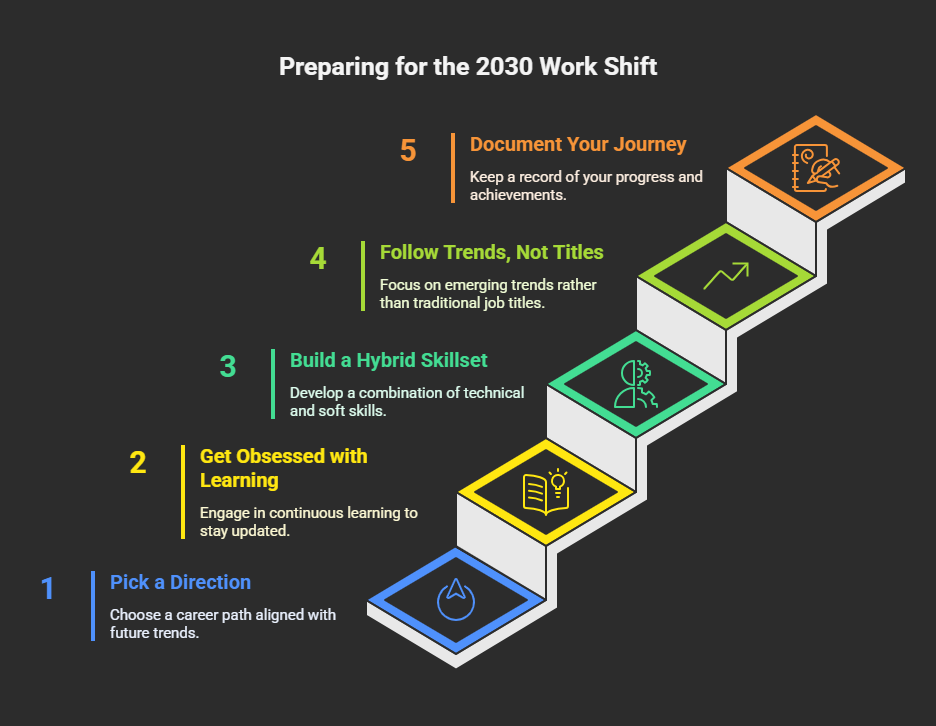

You’re not mentioning Blue Collar non green , manufacturing jobs.
You’re also very heavy Green despite its setting sun of subsidies and flagging winds of hype here in America.
Even if Green isn’t withering to Brown* where come these machines to repair?
Might want to have a look at additive manufacturing as well , aka 3D printing. Here too AI comes into its own, really its greatest promise is with machines.
*Brown energy carries Green in subsidies and manufacturing.
Moreover when REE mining returns to America what is already quite known from China - that every ton of REE generates 2000 tons of toxins, including radioactive waste of thorium or uranium. Even Harvard had to explain “it’s complicated.”
https://hir.harvard.edu/not-so-green-technology-the-complicated-legacy-of-rare-earth-mining/